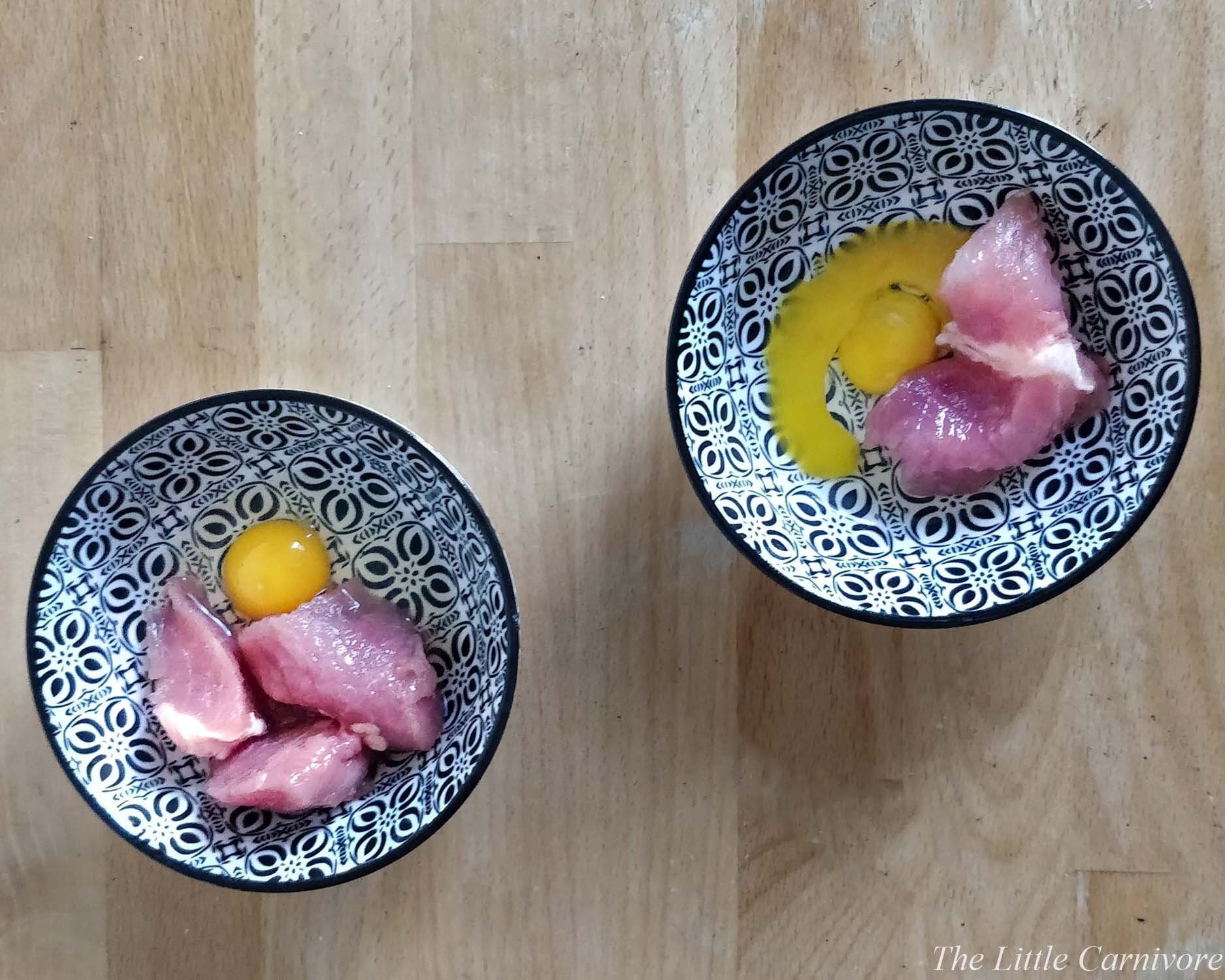What is a Prey Model Raw diet?
After having presented all the different elements and ingredients of a raw diet in the previous articles. I will summarize what the prey model diet is: one of the most popular way to balance a raw diet.
What is a Prey Model Raw diet?
The classic prey model diet
A prey model diet is a raw diet composed of meat, bones, and organs following some ratios. This diet is sometimes designated by those ratios: 80/10/10 or 80/10/5/5 or by the acronym PMR. These ratios correspond to:
80% of muscular meat, such as chicken, beef, rabbit, turkey, mutton, veal... To know more about this, check out my article on meat.
10% of pure bones. To know more about this, check out my article on bones.
10% of organs. To know more about this, check out my article on organs.
5% of the organs needs to be liver.
The remaining 5% needs to be organs which are not liver.
The second main principle of the diet is based on diversity. The diet suggests not to feed always the same type of meat, bones, and organs. To achieve a balanced diet, the ingredients need to vary. In fact, each type of meat, bones, and organs has different nutritional values. For example, beef meat will be richer in zinc than chicken meat.
The prey model diet adapted to cats
The ratios that I presented above are the one generally used for dogs. Cats, however, are often constipated when they eat that amount of bones, so the original 10% of bones becomes 6% when feeding cats.
Therefore, the ratio which is most often used for cats is 84/6/5/5 or 84/6/10, with the same meaning for each component, as explained in the previous paragraph.
Néline with raw beef for dinner
The origins of the diet
The idea between these ratios is to reproduce at home what a cat or a dog eating a wild prey would eat in nature. A prey being composed of meat, bones, and organs. The ratios that I introduced in the previous paragraphs correspond to the percentages of meat, bones and organs that can be found in a typical prey.
That’s why the prey model is sometimes called Franken Prey: in the same way doctor Frankenstein re-created a monster from different parts, the goal of prey model is to recreate a prey from different parts.
It’s quite difficult to find who first recommended these ratios. The best source I found is this blog article on who came up with the prey model diet. It seems it was introduced in the beginning of the 2000’s, as an interpretation of Dr. Tom Lonsdale book, Raw Meaty Bones Promote Health.
Prey Model Raw +
What’s the Prey Model Raw +?
As you may have noticed, the prey model ratios are not perfectly recreating a whole prey: some parts are missing, such as the fur. Moreover, the nutritional values of the meat of wild prey are different if compared to the meat coming from domestic animals. For example, the meat of wild animals contains much more omega 3 than farm animals.
Finally, you need to take into account which meat is available to you. In case you can’t find enough meat diversity, you will need to look for supplements to have a balanced diet.
That’s why many people consider the prey model ratios as a base and add elements to fill the nutritional gaps that they may have.
One of the commonest additions to the Prey Model diet ratios is small oily fish, as they provide omega 3. To know more about it, you can read my blog article on fish.
The prey model diet with additions is sometimes called prey model raw+ or PMR+, to emphasize that other ingredients are added.
Example of dinner for Praline and Néline with raw pork meat and a quail egg
What I do: my ratios
I’m feeding Néline and Praline following a prey model raw + diet, with the following ratios:
74% meat
6% pure bones
10% organs (5% liver and 5% other organs)
10% fish
I also feed every week at least one whole prey meal: this can be a day-old chick or a mouse, and I regularly add an egg or a quail egg to their meal.
These are my general guidelines, and I always try to adapt them to my cats’ needs. For example, I know what the weight of each type of bones I feed them needs to be in order to get well-formed stools.
Note for the French people
In the French raw feeding community, the quantity of bones is not designated in pure bones but in raw meaty bones, which take into account the meat around the bones.
In this case, the prey model ratio becomes 60% meat, 30% raw meaty bones, 10% organs. And if you add fish it becomes 50% meat, 30% raw meaty bones, 10% organs, and 10% fish.
For more details on the different ways to calculate the amount of bones in a raw diet, I invite you to read my article on bones.
The prey model ratios are a useful guideline on how to feed your cat with a raw diet. Nevertheless, they are not perfect and will need to be adapted to your cat(s) and your situation, depending on the meat available to you, your cat’s health and metabolism.
You can find the content of this article in video (with English subtitles):

